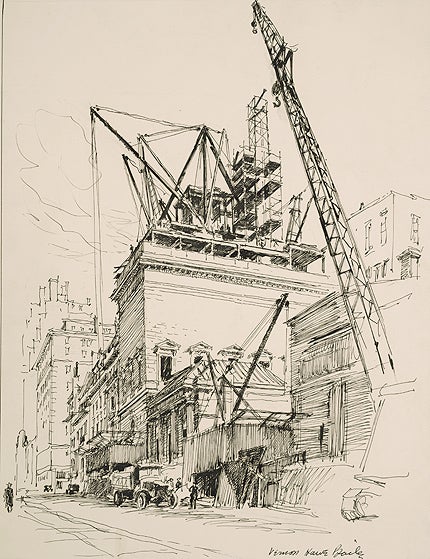From Mansion to Museum: The Frick Collection Celebrates
Seventy-Five Years
On view from June 22 through September 5, 2010
Vernon Howe Bailey (1874–1953)
The Addition to the Frick Museum under Construction, 1934
Pen and India ink on Bristol board
The Frick Collection/Frick Art Reference Library Archives

Helen Clay Frick (1888–1984) founded the Frick Art
Reference Library in 1920 as a memorial to her father. By the
early 1930s the Library had outgrown its building, designed
by the architect Thomas Hastings and in use since 1924.
The rapid expansion of the Library’s extensive collection of
art books, journals, and photographs resulted in an urgent
need for more space to house its holdings appropriately and
provide for future growth. Further, the trustees feared a
lack of visual harmony between Hastings’s older structure,
intended to stand as an independent edifice, and Pope’s
new construction. The goal, as elucidated by the director,
Frederick Mortimer Clapp, was “to produce an integral
architectural impression externally — a oneness for the whole
Frick property.” It was decided that additional space should be
sought for a new building, and adjacent properties at 10 and
12 East 71st Street were purchased to house Pope’s thirteen-story
Library composed of Indiana limestone. In this recently acquired pen-and-ink sketch, the artist Vernon Howe Bailey
documents the construction of the Library at 10 East 71st
Street. The drawing was commissioned by The New York Sun for its daily feature, “Intimate sketches of New York City,” and
appeared in the April 23, 1934, issue.

Exterior of the Frick Art Reference Library,
The Frick Collection/Frick Art Reference Library Archives
|


